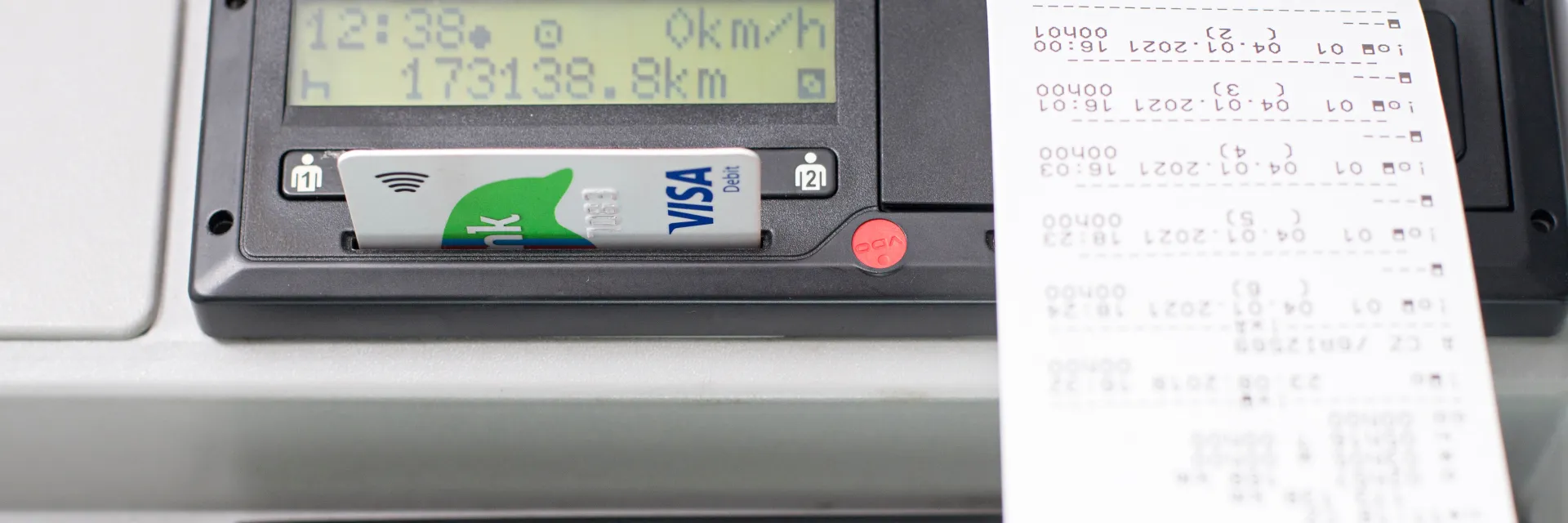


A tachograph is a calibrated device for measuring and controlling the speed, the distance traveled and the driving and rest time of a car. This is why the tachograph can be seen as a mechanical or electronic driver’s logbook.
Many cars with trailers in commercial use require a controlling device for the documentation of the driving and rest times. It basically counts when the trailer is used for the transportation of goods and the permissible total weight is higher than 3500 kg. This can be checked by simply adding the numbers on the vehicle documents.
The owner of the trailer has to get the functionality checked regularly at their own charge.
Since 2013 transporters require a digital tachograph if distances of more than 100 kilometres are traveled on a regular basis. For vehicles with a permissible total weight between 2 and 3.5 tons a tachograph is not obligatory. However, if the trailer does have a tachograph, it has to be used. Analogue tachographs with a tachometric disc are still partly allowed.
There are analogue and digital tachographs. The driving and rest times are automatically recorded by a digital controlling device. These datas matter: